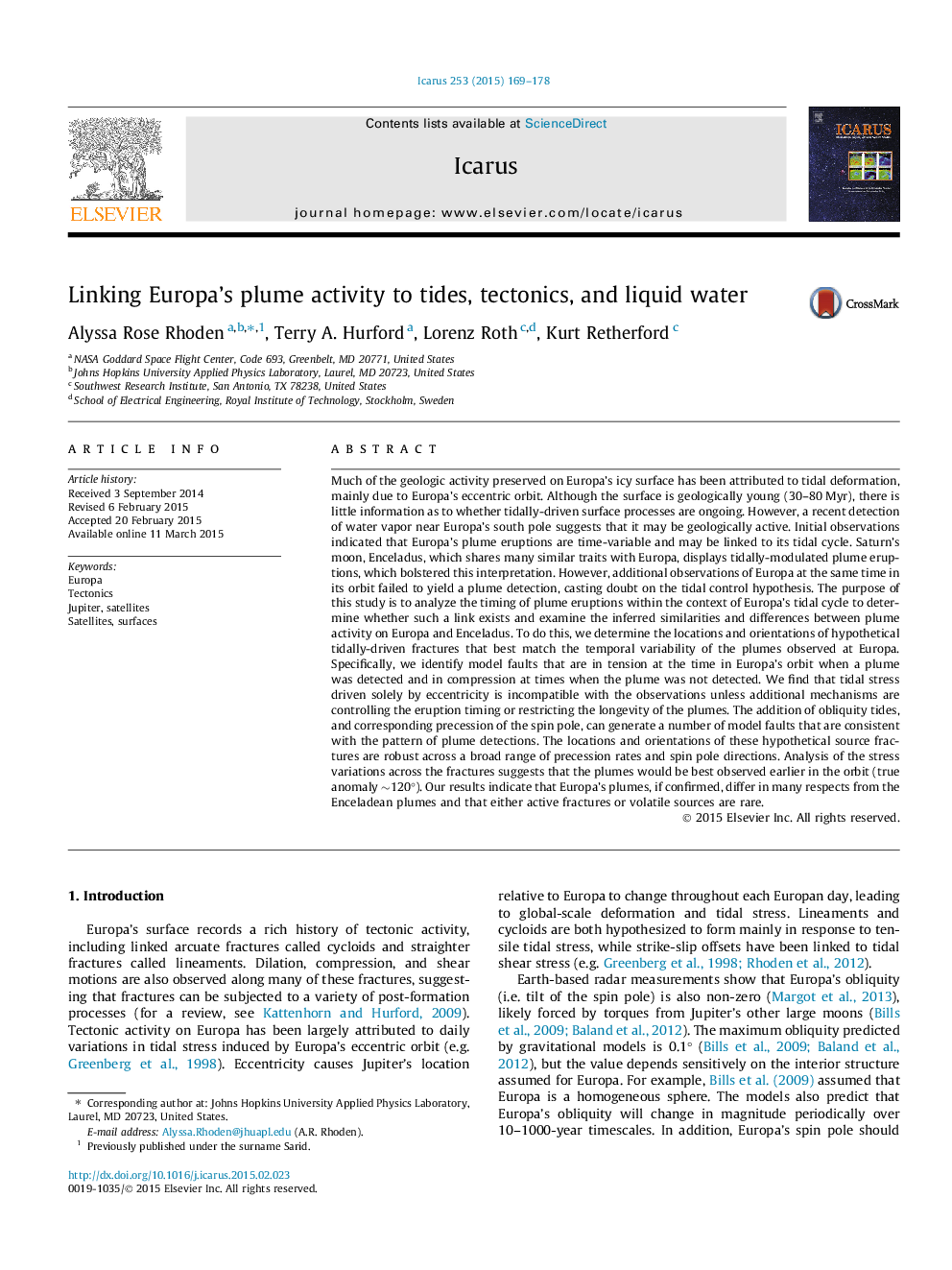| کد مقاله | کد نشریه | سال انتشار | مقاله انگلیسی | نسخه تمام متن |
|---|---|---|---|---|
| 8136426 | 1523537 | 2015 | 10 صفحه PDF | دانلود رایگان |
عنوان انگلیسی مقاله ISI
Linking Europa's plume activity to tides, tectonics, and liquid water
ترجمه فارسی عنوان
پیوند فعالیت پویای اروپا با جزر و مد، تکتونیک و آب مایع
دانلود مقاله + سفارش ترجمه
دانلود مقاله ISI انگلیسی
رایگان برای ایرانیان
کلمات کلیدی
اروپا، تکتونیک، مشتری، ماهواره، ماهواره ها، سطوح،
موضوعات مرتبط
مهندسی و علوم پایه
علوم زمین و سیارات
علوم فضا و نجوم
چکیده انگلیسی
Much of the geologic activity preserved on Europa's icy surface has been attributed to tidal deformation, mainly due to Europa's eccentric orbit. Although the surface is geologically young (30-80 Myr), there is little information as to whether tidally-driven surface processes are ongoing. However, a recent detection of water vapor near Europa's south pole suggests that it may be geologically active. Initial observations indicated that Europa's plume eruptions are time-variable and may be linked to its tidal cycle. Saturn's moon, Enceladus, which shares many similar traits with Europa, displays tidally-modulated plume eruptions, which bolstered this interpretation. However, additional observations of Europa at the same time in its orbit failed to yield a plume detection, casting doubt on the tidal control hypothesis. The purpose of this study is to analyze the timing of plume eruptions within the context of Europa's tidal cycle to determine whether such a link exists and examine the inferred similarities and differences between plume activity on Europa and Enceladus. To do this, we determine the locations and orientations of hypothetical tidally-driven fractures that best match the temporal variability of the plumes observed at Europa. Specifically, we identify model faults that are in tension at the time in Europa's orbit when a plume was detected and in compression at times when the plume was not detected. We find that tidal stress driven solely by eccentricity is incompatible with the observations unless additional mechanisms are controlling the eruption timing or restricting the longevity of the plumes. The addition of obliquity tides, and corresponding precession of the spin pole, can generate a number of model faults that are consistent with the pattern of plume detections. The locations and orientations of these hypothetical source fractures are robust across a broad range of precession rates and spin pole directions. Analysis of the stress variations across the fractures suggests that the plumes would be best observed earlier in the orbit (true anomaly â¼120°). Our results indicate that Europa's plumes, if confirmed, differ in many respects from the Enceladean plumes and that either active fractures or volatile sources are rare.
ناشر
Database: Elsevier - ScienceDirect (ساینس دایرکت)
Journal: Icarus - Volume 253, June 2015, Pages 169-178
Journal: Icarus - Volume 253, June 2015, Pages 169-178
نویسندگان
Alyssa Rose Rhoden, Terry A. Hurford, Lorenz Roth, Kurt Retherford,
